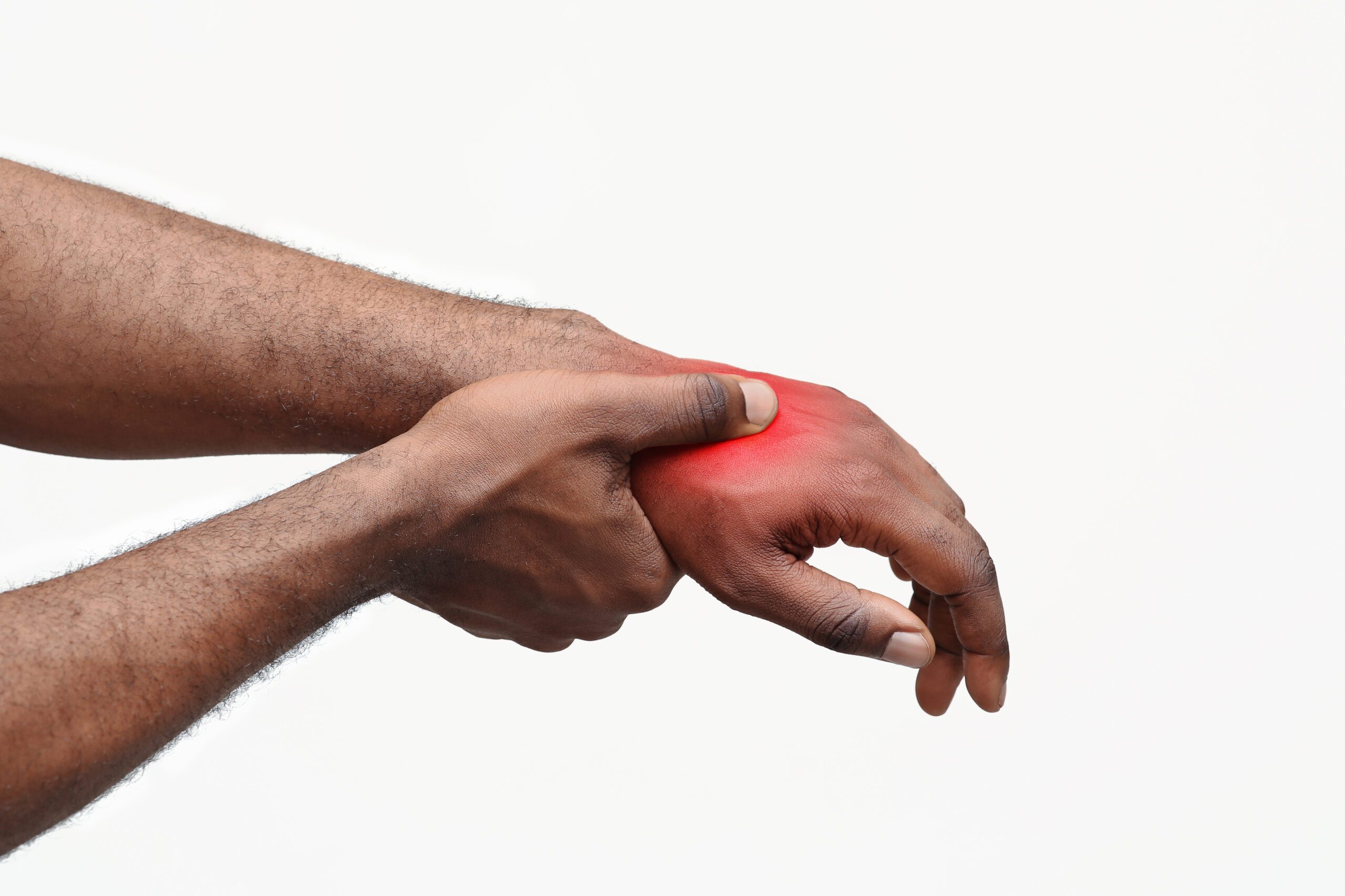Sciatica Associated With Herniated Discs: What to Know After An Auto Accident
Find out how to navigate the challenges of sciatica from herniated disc pain resulting from an auto accident for effective relief.
Managing Sciatica Pain from Herniated Discs After Auto Accidents: A Comprehensive Guide to Integrated Medicine and Chiropractic Care
Sciatica pain, often triggered by herniated discs following a motor vehicle accident (MVA), can significantly disrupt daily life, causing radiating pain, numbness, or weakness along the sciatic nerve. This condition is a common outcome of spinal injuries sustained in car crashes, impacting mobility and overall well-being. Integrated medicine, combining chiropractic care, targeted exercises, massage therapy, acupuncture, naturopathy, and nutritional counseling, offers evidence-based, non-invasive solutions to alleviate pain, promote recovery, and prevent long-term complications. Drawing on clinical expertise and supported by peer-reviewed research, this comprehensive guide explores the causes, risk factors, and treatment options for sciatica associated with herniated discs. It emphasizes a patient-centered, holistic approach, clear communication, and personalized care protocols to support the body’s natural healing processes and restore optimal health.
Understanding Herniated Discs and Sciatica
What Is a Herniated Disc?
The spine is a complex structure composed of vertebrae, muscles, ligaments, and intervertebral discs that act as cushions between the vertebrae. Each disc consists of a tough outer layer, the annulus fibrosus, and a gel-like inner core, the nucleus pulposus (Nedresky et al., 2025). A herniated disc occurs when the nucleus pulposus protrudes through a tear in the annulus fibrosus, often due to trauma such as an MVA. This protrusion can compress nearby nerves, leading to pain, numbness, or weakness in the back, legs, or arms, depending on the herniation’s location (Stretanski et al., 2025).
MVAs are a leading cause of spinal injuries, contributing to over 40% of spinal complications annually (ChiroMed – Integrated Medicine, 2016). The sudden, high-impact forces from a collision can strain or rupture the spinal discs, resulting in herniation and nerve irritation, often manifesting as sciatica.
What Is Sciatica?
Sciatica, also known as sciatic neuralgia, is not a standalone condition but rather a set of symptoms caused by the irritation or compression of the sciatic nerve, the body’s longest nerve, which is formed by nerve roots from L4 to S3 (Davis et al., 2025). It is characterized by radiating pain that travels from the lower back through the buttocks and down one or both legs, often accompanied by numbness, tingling, or weakness in the affected areas. The pain can vary from a mild ache to a sharp, burning sensation or an excruciating jolt, often worsened by movements such as coughing, sneezing, or prolonged sitting.
A common cause of sciatica is a herniated disc in the lumbar spine, particularly at the L4-L5 or L5-S1 levels, where the disc material compresses the sciatic nerve roots (Blamoutier, 2019). MVAs can trigger this condition by causing acute trauma to the spine, leading to disc herniation and subsequent nerve irritation.
Causes of Herniated Discs and Sciatica in Motor Vehicle Accidents
How MVAs Lead to Herniated Discs
The spine is designed to support the body’s weight and facilitate movement, but it is not built to withstand the intense forces of an MVA. The sudden jolt from a collision can cause various injuries to the spine, including:
- Whiplash: The rapid back-and-forth motion of the neck and upper spine during a crash can strain the cervical and thoracic discs, potentially leading to herniation.
- Direct Trauma: The force of impact can rupture the annulus fibrosus, allowing the nucleus pulposus to protrude and compress nearby nerves.
- Facet Joint Damage: The facet joints, which connect the vertebrae, can be injured, contributing to spinal instability and increasing the risk of disc herniation (ChiroMed – Integrated Medicine, 2016).
These injuries disrupt the spine’s structural integrity, making herniated discs a common outcome of MVAs, particularly in rear-end or high-speed collisions.
Factors Contributing to Herniated Discs and Sciatica
Several factors increase the likelihood of developing herniated discs and sciatica following an MVA:
- Age: As individuals age, intervertebral discs lose water content, becoming less flexible and more prone to rupture. This risk increases significantly after age 30, as disc degeneration accelerates (Nosikova et al., 2012).
- Obesity: Excess body weight places additional stress on the spine, increasing the risk of disc herniation, particularly in women with higher body mass indices (Sonntag, 2010).
- Sedentary Lifestyle: Weak core and back muscles from lack of physical activity reduce spinal support, making discs more susceptible to injury during trauma.
- Poor Posture: Chronic poor posture, such as slouching while driving, can exacerbate spinal stress during an accident.
- Pre-existing Spinal Conditions: Conditions like degenerative disc disease or scoliosis heighten the risk of herniation following trauma (Hincapié et al., 2025).
- Accident Severity: The intensity of the collision, including speed and angle, directly correlates with the likelihood and severity of spinal injuries.
Overlapping Risk Profiles of Herniated Discs and Sciatica
Herniated discs and sciatica share interconnected risk profiles due to their closely related pathophysiology. A herniated disc can directly cause sciatica by compressing the sciatic nerve roots, but additional factors amplify the risks and complications for both conditions:
- Inflammatory Response: When a disc herniates, the nucleus pulposus releases proinflammatory cytokines, such as interleukin-1, interleukin-6, interleukin-8, and tumor necrosis factor-alpha, which irritate the surrounding nerves and exacerbate sciatica symptoms (Cosamalón-Gan et al., 2021). This inflammation can prolong pain and delay recovery.
- Autoimmune Reaction: The nucleus pulposus is immunologically privileged, meaning it is typically shielded from the immune system. When exposed due to a herniation, it can trigger an autoimmune response, further increasing inflammation and nerve irritation (Cosamalón-Gan et al., 2021).
- Neurological Complications: Severe disc herniation can lead to serious conditions like cauda equina syndrome, characterized by bowel or bladder dysfunction, requiring immediate surgical intervention (Tang et al., 2019).
- Motor Dysfunction: Compression of the sciatic nerve or its roots can cause weakness in the hamstrings, calf muscles, or foot muscles, impairing mobility and increasing the risk of falls (Davis et al., 2025).
- Chronic Pain Development: Untreated sciatica or herniated discs can contribute to chronic pain syndromes, such as fibromyalgia, due to prolonged nerve irritation and central sensitization (ChiroMed – Integrated Medicine, 2016).
These overlapping risks underscore the need for early intervention to address both the mechanical and inflammatory components of sciatica and herniated discs, preventing long-term complications.
Clinical Rationale for Integrated Medicine and Chiropractic Care in Managing Sciatica
Integrated medicine combines chiropractic care, naturopathy, acupuncture, and nutritional counseling to address the root causes of sciatica, such as herniated discs, in a holistic, patient-centered manner. Chiropractic care, a core component of this approach, offers a safe, effective, and evidence-based method for pain relief and functional restoration. Specialists in integrated medicine emphasize personalized care to promote long-term healing and overall wellness. Below is the clinical rationale for why integrated medicine and chiropractic care are effective for sciatica associated with herniated discs:
1. Restoring Spinal Alignment and Reducing Nerve Compression
Chiropractic adjustments, or spinal manipulations, aim to realign the spine, reducing pressure on compressed nerve roots. By correcting vertebral subluxations (misalignments), chiropractors alleviate nerve irritation and improve spinal mobility. For sciatica caused by herniated discs, techniques such as the flexion-distraction technique utilize specialized tables to gently stretch the spine, thereby moving the disc material away from the nerve root and reducing inflammation and pain (ChiroMed – Integrated Medicine, 2016).
Clinical Evidence: A randomized controlled trial demonstrated that nonsurgical spinal decompression therapy, similar to flexion-distraction, significantly reduced leg pain and disability in patients with subacute lumbar disc herniation, with a 26.9% reduction in herniation volume compared to controls (Choi et al., 2022).
2. Mitigating Inflammation Through Holistic Approaches
The inflammatory response triggered by a herniated disc is a major contributor to sciatica pain. Chiropractic adjustments improve blood flow and stimulate the release of anti-inflammatory mediators, while integrated medicine incorporates naturopathic and nutritional strategies to reduce systemic inflammation. These approaches disrupt the cycle of inflammation caused by proinflammatory cytokines (Cosamalón-Gan et al., 2021).
Expert Insight: Integrated medicine combines chiropractic care with naturopathy, acupuncture, and nutritional counseling to address both the mechanical and chemical aspects of sciatica, supporting the body’s natural anti-inflammatory processes.
3. Enhancing Spinal Mobility and Function
Herniated discs and sciatica often restrict spinal mobility, exacerbating pain and dysfunction. Chiropractic adjustments restore range of motion by mobilizing stiff joints and relaxing tense muscles, while targeted exercises strengthen the supporting musculature. This is particularly beneficial after an MVA, where muscle spasms and joint stiffness can worsen symptoms.
Clinical Evidence: A systematic review found that spinal manipulative therapy significantly reduced pain and improved function in patients with low back pain and radiculopathy, supporting its use in sciatica management (Alrwaily et al., 2018).
4. Drug-Free Pain Management
Integrated medicine and chiropractic care provide a non-pharmacological approach to pain relief, avoiding the risks associated with long-term medication use, such as opioid dependency or gastrointestinal side effects from nonsteroidal anti-inflammatory drugs (NSAIDs). By targeting the underlying cause of sciatica, these approaches offer sustainable pain relief.
Expert Approach: Integrated medicine combines chiropractic adjustments with acupuncture, naturopathy, and nutritional counseling to empower patients to manage their pain naturally, reducing reliance on medications.
5. Preventing Chronic Conditions
Untreated sciatica or herniated discs can lead to chronic pain, neurological deficits, or permanent nerve damage. Integrated medicine focuses on early intervention to prevent these complications by addressing the root cause through a combination of chiropractic care, acupuncture, naturopathy, and lifestyle changes.
Clinical Evidence: A meta-analysis revealed that discectomy offers short-term relief for sciatica but yields negligible long-term benefits compared to non-invasive treatments, such as chiropractic care, which can be equally effective with fewer risks (Liu et al., 2023).
Feeling Better Than Ever After a Semi-Truck Accident- Video Testimonial
Holistic Approaches to Managing Sciatica Pain
Integrated medicine emphasizes a whole-person approach, combining chiropractic care with holistic therapies to enhance recovery, reduce pain, and support the body’s natural healing processes. These methods address physical, emotional, and lifestyle factors to provide comprehensive care for sciatica and herniated discs.
1. Targeted Exercises and Rehabilitation Programs
Therapeutic exercises strengthen the muscles supporting the spine, improve flexibility, and reduce pressure on the sciatic nerve. Personalized rehabilitation plans, focusing on mobility, flexibility, and agility, optimize recovery and prevent reinjury (ChiroMed – Integrated Medicine, 2016).
Recommended Exercises:
- Piriformis Stretch: Targets the piriformis muscle, which can compress the sciatic nerve when tight (Hicks et al., 2023).
- Cat-Cow Stretch: Enhances spinal flexibility and reduces lower back stiffness.
- Core Strengthening: Exercises such as planks and bridges strengthen the abdominal and back muscles, providing better spinal support.
- Hamstring Stretches: Reduces tension in the posterior chain, alleviating sciatic nerve irritation.
Clinical Evidence: A systematic review confirmed that targeted exercises and physical therapy significantly reduced pain and disability in patients with lumbar radiculopathy (Vanti et al., 2021).
2. Massage Therapy
Massage therapy relieves muscle tension, improves circulation, and reduces inflammation, all of which contribute to sciatica pain relief. Techniques like deep tissue massage and myofascial release target tight muscles and fascia that may compress the sciatic nerve (ChiroMed – Integrated Medicine, n.d.).
Expert Insight: Massage therapy, performed by licensed therapists, complements chiropractic adjustments by enhancing muscle relaxation and the effectiveness of spinal manipulations.
3. Acupuncture
Acupuncture involves inserting thin needles into specific points on the body to stimulate healing and reduce pain. It modulates pain signals and reduces inflammation, making it an effective adjunctive therapy for sciatica.
Clinical Evidence: A network meta-analysis found that acupuncture provided significant pain relief for lumbar disc herniation, comparable to other non-invasive treatments (Huang et al., 2019).
4. Naturopathy and Nutritional Counseling
Integrated medicine emphasizes naturopathy and nutrition as cornerstones of the healing process. An anti-inflammatory diet and targeted supplements can reduce systemic inflammation and support disc healing, while lifestyle modifications address the root causes of sciatica.
- Nutrition: A diet rich in omega-3 fatty acids, antioxidants, and whole foods reduces inflammation and supports tissue repair (Cosamalón-Gan et al., 2021).
- Stress Management: Techniques such as mindfulness meditation and yoga help reduce muscle tension and improve pain tolerance, addressing the emotional aspects of chronic pain.
- Weight Management: Maintaining a healthy weight helps reduce spinal stress, thereby lowering the risk of recurrent disc herniation.
Expert Approach: Integrated medicine combines chiropractic care, acupuncture, naturopathy, and nutritional counseling to create a comprehensive, personalized treatment plan.
5. Postural Correction and Ergonomics
Poor posture and improper ergonomics can exacerbate sciatica symptoms, particularly after an MVA. Educating patients on proper posture and ergonomic adjustments reduces spinal stress (ChiroMed – Integrated Medicine, 2016).
Practical Tips:
- Use a chair with lumbar support to maintain the spine’s natural curve.
- Take breaks every 30 minutes to stand and stretch, avoiding prolonged sitting.
- Sleep on a medium-firm mattress with a pillow under the knees to reduce lower back strain.
The Importance of Clear Communication in Treatment Success
Clear communication between healthcare providers and patients is critical for successful outcomes in managing sciatica and herniated discs. Patient education empowers individuals to take an active role in their recovery (ChiroMed – Integrated Medicine, n.d.).
Key Communication Strategies
- Explaining the Diagnosis: Patients should understand that sciatica is a symptom of an underlying issue, such as a herniated disc, and that treatment targets the root cause.
- Setting Realistic Expectations: Integrated medicine and chiropractic care require time and consistency to achieve optimal results. Patients should be informed about the expected timeline for pain relief and functional improvement.
- Encouraging Active Participation: Patients who engage in prescribed exercises, nutritional changes, and lifestyle modifications tend to have better outcomes.
- Addressing Concerns: Open dialogue about risks, benefits, and alternative treatments builds trust and ensures patients feel confident in their care.
Clinical Evidence: Studies show that patient-centered communication improves adherence to treatment plans and enhances outcomes in musculoskeletal conditions (Alrwaily et al., 2018).
Preventing Long-Term Complications
Untreated sciatica or herniated discs can lead to chronic pain, neurological deficits, or permanent nerve damage. Integrated medicine and chiropractic care help prevent these complications by:
- Reducing Nerve Compression: Early intervention prevents prolonged nerve irritation, which could lead to permanent damage.
- Promoting Tissue Healing: Therapies like spinal decompression, acupuncture, and nutritional support enhance blood flow and nutrient delivery to the injured disc (Choi et al., 2022).
- Strengthening Supporting Structures: Exercises strengthen muscles and ligaments around the spine, reducing the risk of recurrent injuries.
- Addressing Inflammation: Anti-inflammatory diets and acupuncture manage the inflammatory response, preventing chronic pain syndromes (Cosamalón-Gan et al., 2021).
Expert Insight: Proactive, non-invasive interventions are crucial in preventing long-term complications, allowing patients to return to normal activities more quickly and with greater resilience.
Case Study: A Patient’s Journey to Recovery
A patient involved in an MVA experienced severe sciatica symptoms due to a herniated disc, which limited their ability to engage in daily activities and maintain their wellness goals. Through a comprehensive, integrated medicine treatment plan that included chiropractic adjustments, targeted exercises, acupuncture, massage therapy, and nutritional counseling, the patient achieved significant pain relief, restored mobility, and improved overall health. This holistic, patient-centered approach empowered the patient to take control of their recovery and return to an active lifestyle (ChiroMed – Integrated Medicine, 2016).
Conclusion
Sciatica pain caused by herniated discs from MVAs is a complex condition driven by mechanical, inflammatory, and neurological factors. Integrated medicine, combining chiropractic care, targeted exercises, massage therapy, acupuncture, naturopathy, and nutritional counseling, offers a clinically supported, non-invasive solution to alleviate pain, restore function, and prevent long-term complications. By addressing the whole person—body, mind, and lifestyle—these approaches support the body’s natural healing processes and promote optimal wellness. Clear communication and patient education are crucial for ensuring adherence and achieving optimal outcomes. For those experiencing sciatica after an MVA, seeking integrated medicine and chiropractic care from qualified professionals can be a critical step toward recovery and enhanced quality of life.
References
- Alrwaily, M., Almutiri, M., & Schneider, M. (2018). Assessment of variability in traction interventions for patients with low back pain: A systematic review. Chiropractic & Manual Therapies, 26(35). https://pubmed.ncbi.nlm.nih.gov/30237870/
- Blamoutier, A. (2019). Nerve root compression by lumbar disc herniation: A French discovery? Orthopaedics & Traumatology: Surgery & Research, 105(2), 335–338. https://pubmed.ncbi.nlm.nih.gov/30799172/
- Choi, E., Gil, H. Y., Ju, J., Han, W. K., Nahm, F. S., & Lee, P.-B. (2022). Effect of nonsurgical spinal decompression on intensity of pain and herniated disc volume in subacute lumbar herniated disc. International Journal of Clinical Practice, 2022, 6343837. https://pubmed.ncbi.nlm.nih.gov/36263240/
- ChiroMed – Integrated Medicine. (2016, August). Herniated discs & sciatica after an auto accident. https://www.elpasobackclinic.com/herniated-discs-sciatica-after-auto/
- ChiroMed – Integrated Medicine. (n.d.). Post-accident massage benefits for injuries. https://www.elpasobackclinic.com/post-accident-massage-benefits-for-injuries/
- Cosamalón-Gan, I., Cosamalón-Gan, T., Mattos-Piaggio, G., Villar-Suárez, V., García-Cosamalón, J., & Vega-Álvarez, J. A. (2021). Inflammation in the intervertebral disc herniation. Neurocirugia (English Edition), 32(1), 21–35. https://pubmed.ncbi.nlm.nih.gov/32169419/
- Davis, D., Taqi, M., & Vasudevan, A. (2025). . In StatPearls. StatPearls Publishing. https://pubmed.ncbi.nlm.nih.gov/29939685/
- Hicks, B. L., Lam, J. C., & Varacallo, M. A. (2023). Piriformis syndrome. In StatPearls. StatPearls Publishing. https://pubmed.ncbi.nlm.nih.gov/28846222/
- Hincapié, C. A., Kroismayr, D., Hofstetter, L., Kurmann, A., Cancelliere, C., Raja Rampersaud, Y., Boyle, E., Tomlinson, G. A., Jadad, A. R., Hartvigsen, J., Côté, P., & Cassidy, J. D. (2025). Incidence of and risk factors for lumbar disc herniation with radiculopathy in adults: A systematic review. European Spine Journal, 34(1), 263–294. https://pubmed.ncbi.nlm.nih.gov/39453541/
- Huang, R., Meng, Z., Cao, Y., Yu, J., Wang, S., Luo, C., Yu, L., Xu, Y., Sun, Y., & Jiang, L. (2019). Nonsurgical medical treatment in the management of pain due to lumbar disc prolapse: A network meta-analysis. Seminars in Arthritis and Rheumatism, 49(2), 303–313. https://pubmed.ncbi.nlm.nih.gov/30940466/
- Liu, C., Ferreira, G. E., Abdel Shaheed, C., Chen, Q., Harris, I. A., Bailey, C. S., Peul, W. C., Koes, B., & Lin, C.-W. C. (2023). Surgical versus non-surgical treatment for sciatica: Systematic review and meta-analysis of randomised controlled trials. BMJ, 381, e070730. https://pubmed.ncbi.nlm.nih.gov/37076169/
- Nosikova, Y. S., Santerre, J. P., Grynpas, M., Gibson, G., & Kandel, R. A. (2012). Characterization of the annulus fibrosus-vertebral body interface: Identification of new structural features. Journal of Anatomy, 221(6), 577–589. https://pubmed.ncbi.nlm.nih.gov/22747710/
- Sonntag, V. K. H. (2010). Treatment of the herniated lumbar disc: Persistent problem. World Neurosurgery, 74(6), 574–575. https://www.sciencedirect.com/science/article/abs/pii/S187887501000536X
- Stretanski, M. F., Hu, Y., & Mesfin, F. (2025). Disk herniation. In StatPearls. StatPearls Publishing. https://pubmed.ncbi.nlm.nih.gov/28722852/




